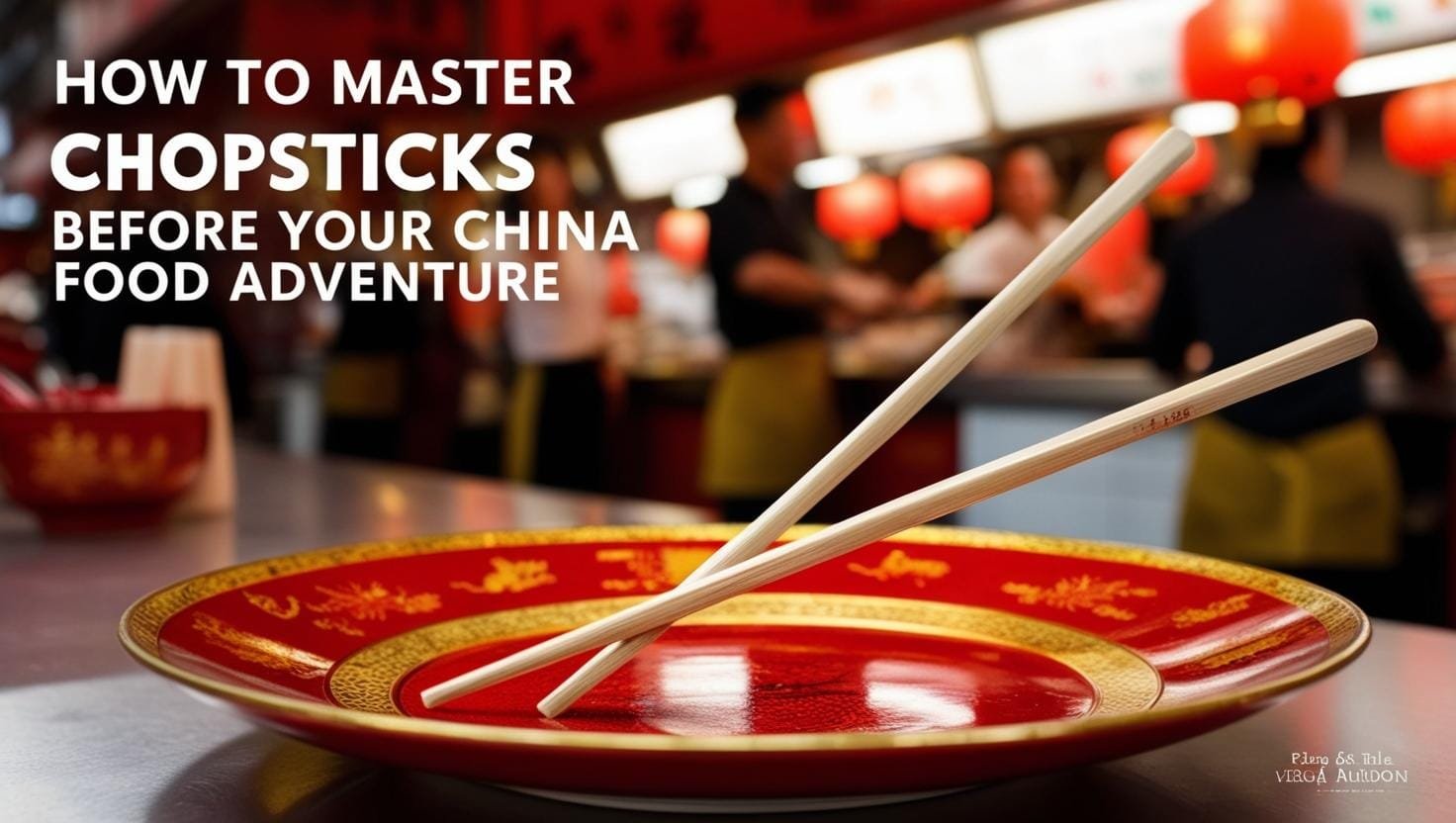How to Master Chopsticks Before Your China Food Adventure
Planning a trip to China is an exciting prospect, filled with visions of ancient wonders, bustling cities, and of course, incredible food! From steaming dim sum to flavorful stir-fries, experiencing authentic Chinese cuisine is a highlight for many travelers. But for newcomers, a small, yet crucial, skill can sometimes feel like a barrier: mastering chopsticks. Don’t let this stop you from diving headfirst into your **China food** adventure! Here at jusha.travel, we love sharing **travel tips** to make your China journey unforgettable, and that includes helping you feel confident at the dinner table. This **chopsticks guide** is designed to give you the **cultural skills** you need to navigate meals like a pro and truly enjoy your **foodie China** experience.
The Basic Chopsticks Guide: Getting a Grip on Success
Learning to use chopsticks might seem tricky at first, but it’s a skill that’s surprisingly easy to pick up with a little practice. Think of chopsticks as an extension of your fingers, working in tandem to pick up food. The fundamental technique involves two chopsticks, one held stationary and the other mobile.
Start by holding one chopstick in the crook of your hand, between your thumb and index finger, with the wider end towards the back of your hand. This chopstick will remain mostly still. The second chopstick is held between the tips of your thumb, index, and middle fingers, much like you would hold a pen. This is the chopstick you will move to grip and lift food. Practice opening and closing the tips of the chopsticks using just your index and middle fingers while keeping the first chopstick stable. It might feel awkward initially, but keep practicing this squeezing and releasing motion.
Practice Makes Perfect: Simple Exercises for Chopstick Proficiency
So, you understand the grip, but how do you translate that into picking up slippery noodles or delicate pieces of tofu? The key is practice, and you can start long before you even board your flight to China.
Grab a bowl of small, easy-to-grip items at home. Try using your chopsticks to pick up things like:
* Peas
* Corn kernels
* Rice (cooked and uncooked)
* Small candies
Gradually move к more challenging items like peanuts, olives, or even ice cubes. This builds dexterity and control. Remember, it’s not about brute force; it’s about precision and a gentle touch. Regularly practicing for just 10-15 minutes a day can make a significant difference in your confidence for your **foodie China** journey. Don’t be discouraged if you drop things at first – everyone does! It’s part of the learning curve.
Beyond the Basics: Chopstick Etiquette and Cultural Nuances
While mastering the physical act of using chopsticks is important for your **China food** experience, understanding the cultural etiquette surrounding them is crucial for avoiding unintentional offense and showing respect during your **cultural skills** journey. In China, chopsticks are more than just utensils; they are imbued with tradition and symbolism.
Here are a few key etiquette points to keep in mind:
* **Do not stick your chopsticks upright in a bowl of rice.** This resembles incense sticks used in offerings to the deceased and is considered very bad luck.
* **Never point your chopsticks at someone.** This is considered rude.
* **Avoid hovering your chopsticks over dishes while deciding what to take.** It’s best to decide before reaching.
* **Do not use your chopsticks to tap on your bowl or make noise.**
* **When taking food from communal dishes, it’s courteous to use serving chopsticks if provided.** If not, use the wider end of your own chopsticks if you are comfortable doing so, but never the end you put in your mouth.
* **When you finish eating, place your chopsticks neatly on the chopstick rest or beside your bowl.** Do not leave them crossed or in a messy pile.
Being mindful of these customs will not only make your dining experience smoother but also demonstrate your respect for local traditions during your travels and enhance your overall **cultural skills**.
From Practice to Plate: Enjoying Your China Food Adventure
Equipped with your newfound chopstick skills and an understanding of etiquette, you are well on your way to fully embracing the incredible **China food** scene. Don’t be afraid to experiment and try new things. From regional specialities like spicy Sichuan hotpot to delicate Cantonese dim sum, there’s a whole world of flavors waiting to be discovered.
Using chopsticks allows you to engage more fully with the dining experience. It encourages you to slow down, appreciate the textures and aromas of the food, and participate in the communal aspect of many Chinese meals. Sharing dishes and using chopsticks together fosters a sense of connection and community around the table, a vital part of Chinese culture that enhances your **travel tips** for genuine immersion. Remember to be adventurous, ask questions, and don’t be afraid to try! Most locals are understanding and appreciative of visitors who are making an effort to learn their customs.
Mastering chopsticks is a rewarding step in preparing for your unforgettable journey to China. It’s a practical skill that will open doors to incredible culinary experiences and demonstrate your respect for local culture. With a little practice and an awareness of etiquette, you’ll be navigating your **foodie China** adventure with confidence and ease.
Ready to explore more of what China has to offer besides the amazing food? Visit jusha.travel for more comprehensive guides, inspiring itineraries, and essential information to plan your dream trip. Have you mastered chopsticks? Share your experiences and tips in the comments below!





One comment on “How to Master Chopsticks Before Your China Food Adventure”
Comments are closed.